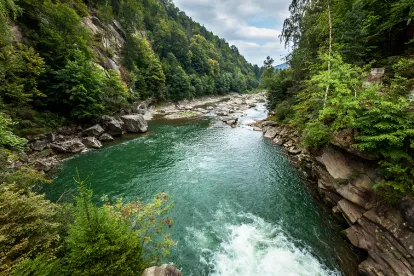On January 23, 2020, the U.S. Environmental Protection Agency and the Department of the Army announced the finalized Navigable Waters Protection Rule, defining “Waters of the United States” under the Clean Water Act. The new Rule could have significant implications on the scope of federal jurisdiction, which dictates whether a project is subject to federal agency review and requires a federal permit (e.g., whether the dredge or fill of wetlands will require a Section 404 permit issued by the U.S. Army Corps of Engineers). The new Rule, which will become final 60 days after publication in the Federal Register, appears to narrow the scope of what qualifies as a “Water of the United States” (WOTUS”) excluding, for example, those isolated wetlands and ephemeral streams that were jurisdictional under the previous administration’s policies. This means that certain projects located on or adjacent to certain waters (including wetlands), that previously required a 404 Permit from the Army Corps may not need to secure such a costly and time-consuming permit in the future.
The new Rule establishes four categories of waters that are considered WOTUS:
-
Territorial seas and traditional navigable waters – including large rivers and lakes and tidally-influenced waterbodies used in interstate or foreign commerce;
-
Tributaries – including perennial and intermittent rivers and streams that contribute surface flow to traditional navigable waters in a typical year;
-
These naturally occurring surface water channels must flow more often than just after a single precipitation event—they must be perennial or intermittent;
-
The new Rule characterizes a “typical year” by comparing precipitation, drought and other climatic factors from a period of interest (e.g., from the past season or year) with the normal range of those factors that would be expected, based on the past 30 years of data.
-
-
Can connect to a traditional navigable water or territorial sea in a typical year either directly or through other WOTUS, through channelized non-jurisdictional surface waters, through artificial features (including culverts and spillways), or through natural features (including debris piles and boulder fields);
-
Ditches only where they satisfy the flow conditions of the perennial and intermittent tributary definition, and either were constructed in or relocate a tributary or were constructed in an adjacent wetland and contribute perennial or intermittent flow to a traditional navigable water in a typical year;
-
-
Lakes, ponds, and impoundments of jurisdictional waters – when they contribute surface water flow to a traditional navigable water or territorial sea in a typical year either directly or through other WOTUS, through channelized non-jurisdictional surface waters, through artificial features (including culverts and spillways), or through natural features (including debris piles and boulder fields);
-
Also jurisdiction where they are flooded by a WOTUS in a typical year;
-
-
Adjacent wetlands
-
Including wetlands that physically touch other jurisdictional waters, are separated from a WOTUS by only a natural berm, bank or dune, are inundated by flooding from a WOTUS in a typical year, are physically separated from a jurisdictional water by an artificial dike, barrier, or similar artificial structure (so long as that structure allows for a direct hydrologic surface connection between the wetlands and the jurisdictional water in a typical year, such as through a culvert, flood or tide gate, pump, or similar artificial feature);
-
An adjacent wetland is jurisdictional in its entirety when a road or similar artificial structure divides the wetland, as long as the structure allows for a direct hydrologic surface connection through or over that structure in a typical year.
-
The new Rule also explicitly delineates what are not considered WOTUS, and therefore not jurisdictional:
-
Groundwater, including groundwater drained through subsurface drainage systems, such as drains in agricultural lands;
-
Ephemeral features, including ephemeral streams, swales, gullies, rills, and pools;
-
Diffuse stormwater run-off and directional sheet flow over upland;
-
Many farm and roadside ditches;
-
Prior converted cropland, except when cropland is abandoned (i.e., not used for, or in support of, agricultural purposes in the immediately preceding five years) and has reverted to wetlands;
-
Artificially irrigated areas, including fields flooded for agricultural production, that would revert to upland should application of irrigation water to that area cease;
-
Artificial lakes and ponds, including water storage reservoirs and farm, irrigation, stock watering, and log cleaning ponds, constructed or excavated in upland or in non-jurisdictional waters;
-
Water-filled depressions constructed or excavated in upland or in non-jurisdictional waters incidental to mining or construction activity, and pits excavated in upland or in non-jurisdictional waters for the purpose of obtaining fill, sand, or gravel;
-
Stormwater control features excavated or constructed in upland or in non-jurisdictional waters to convey, treat, infiltrate, or store stormwater run-off;
-
Groundwater recharge, water reuse, and wastewater recycling structures, including detention, retention and infiltration basins and ponds, that are constructed in upland or in non-jurisdictional waters;
-
Waste treatment systems, defined as all components, including lagoons and treatment ponds (such as settling or cooling ponds), designed to either convey or retain, concentrate, settle, reduce, or remove pollutants, either actively or passively, from wastewater or stormwater prior to discharge (or eliminating any such discharge).





 />i
/>i
